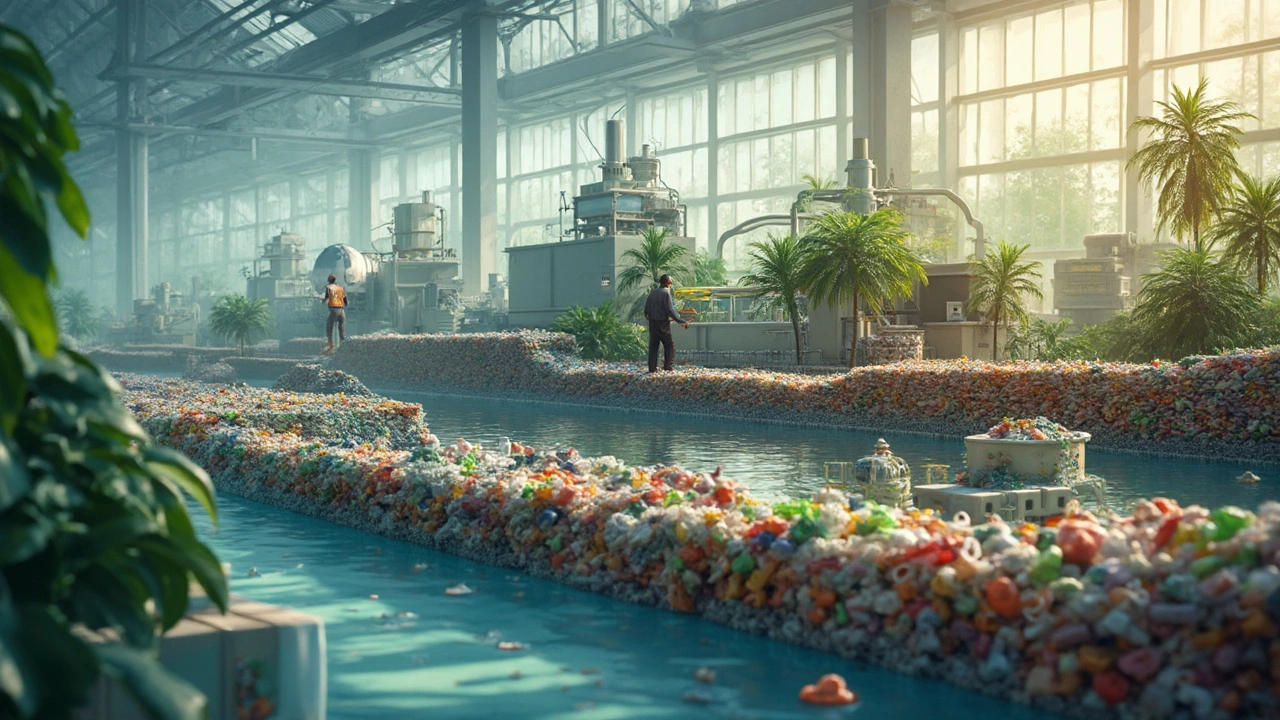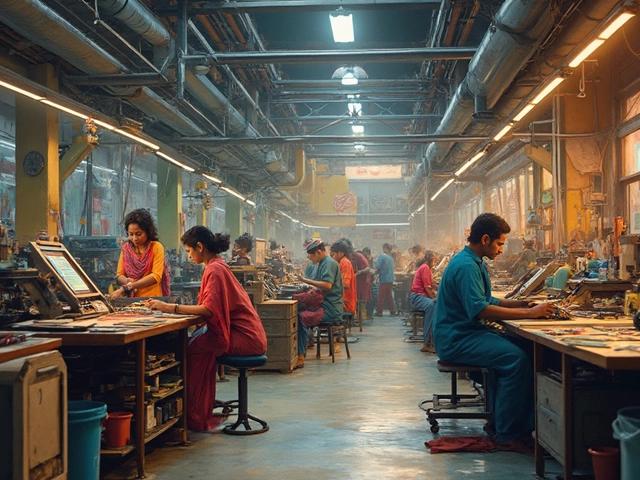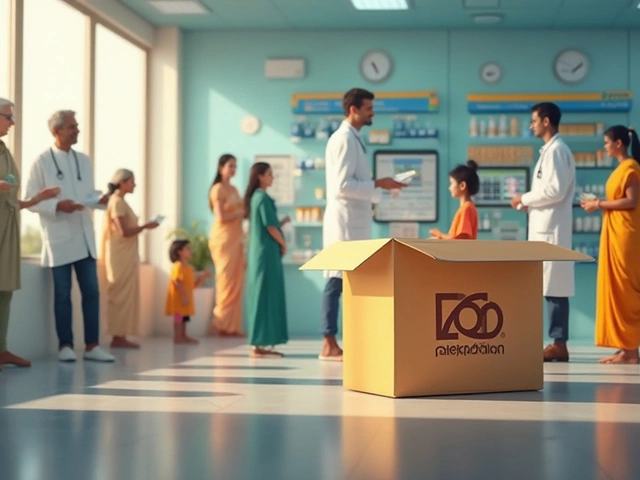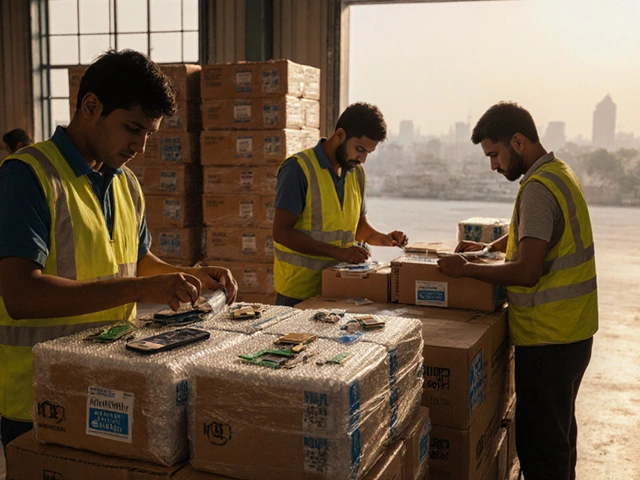When it comes to choosing the 'highest quality' plastic, it really depends on what you need it for. Did you know different plastics shine in different areas? You wouldn't use the same plastic for a space shuttle as you would for a water bottle!
Let's break it down. Every plastic has its own set of strengths and weaknesses. Some might be top-notch for durability, while others could lead the charge in being environmentally friendly. And of course, not all plastics are created equal when it comes to safety and efficiency. We'll dig into these details to give you a clearer picture.
It might surprise you, but there are plastics today that boast incredible versatility and endurance. They're not only used in common products but are key players in advanced industries too. Imagine replacing metal parts in a car with a lightweight, strong plastic that also saves fuel—pretty cool, right?
- Understanding Plastic Quality
- Types of High-Quality Plastics
- Factors Affecting Plastic Quality
- Tips for Choosing the Right Plastic
Understanding Plastic Quality
Alright, so what does 'plastic quality' even mean? It's not just about durability or price. We're talking about a whole range of factors, each playing a part in deciding which plastic comes out on top.
Durability and Strength
First off, let's chat about durability. Some plastics are built to last and can withstand extreme conditions without breaking a sweat. Take polycarbonate, for example. It's tough and often used in bulletproof glass and innovation-driven fields. Quality really shines here if you're looking for strength.
Environmentally Friendly? Think Again
Beyond durability, how plastics affect our planet is a hot topic. The best way to go green with plastics is to choose ones that are recyclable or biodegradable. For instance, polylactic acid (PLA) is a biodegradable plastic made from renewable resources like corn starch. It's a favorite for making eco-friendly disposable products.
Safety Matters
Then there's safety. No one wants a product that leaches toxic chemicals. A top-quality plastic, like high-density polyethylene (HDPE), is often used for food containers because it's tough and chemical-resistant, meaning it's less likely to contaminate food and drink.
The Cost Factor
Quality doesn't always come cheap. That said, spending a bit more might mean getting a product that's safer, more durable, and sometimes even more sustainable in the long run. Investing in high-quality quality plastic can save both money and resources over time.
Industry Standards
Here's a pro tip: keep your eyes peeled for industry certifications. These are like badges of honor for plastics, guaranteeing they've passed stringent tests for safety and performance. Organizations like ISO (International Organization for Standardization) set the bar for these standards, helping consumers make informed choices.
Quality in plastics isn't just about one thing. It's this whole blend of characteristics, each bringing something to the table. Knowing these helps in picking the best plastic for your needs, whether you're a consumer or a manufacturer.
Types of High-Quality Plastics
Dive into the world of plastics, and you'll find quite a lineup. Some types of plastics stand out when it comes to quality—be it their strength, flexibility, or environmental impact. Here's a closer look at what makes these plastics tick.
Polyethylene Terephthalate (PET)
PET is often crowned for being the go-to choice in the beverage industry, thanks to its excellent barrier properties and shatter-resistant nature. If you've ever wondered why your fizzy drink stays fizzy, you have PET to thank. Not only is it durable, but it's also highly recyclable, giving it extra points in the sustainability game.
Polycarbonate (PC)
Here's a quality plastic known for its transparency and strength. Used in making eyewear lenses and even in electronics, PC is celebrated for its high impact resistance. It's like the Kevlar of the plastic world!
Polytetrafluoroethylene (PTFE)
Does Teflon ring a bell? Well, that's PTFE in action. Known for its super-slick surface, PTFE is widely used in non-stick cookware. It's got the strength and the ability to handle some serious heat.
Polypropylene (PP)
PP is a tough cookie. Known for its elasticity and resistance to fatigue, it's the backbone of many everyday items, from car parts to food containers. It doesn't break a sweat under stress!
| Plastic Type | Key Use | Primary Benefit |
|---|---|---|
| PET | Bottles | Highly recyclable |
| PC | Electronics | High impact resistance |
| PTFE | Cookware | Heat resistance |
| PP | Car parts | Elasticity |
Each of these plastics brings something unique to the table. But, ultimately, the best plastic for you will depend on your specific needs. Whether it's durability, flexibility, or eco-friendliness, knowing what each type offers can help you make informed choices.

Factors Affecting Plastic Quality
Ever wondered what makes one type of plastic stand out from the rest? It's not just about price or brand. There are several critical factors that determine the quality of plastics.
Material Composition
The first thing to consider is what exactly the plastic is made of. Some plastics, like Polycarbonate, are known for their strength and toughness, making them ideal for products that need to withstand impact. On the flip side, Polyethylene is all about flexibility and is often used in common household products. The specific combination of resins and additives can significantly impact the plastic's quality.
Manufacturing Processes
How a plastic is made also plays a huge role in its quality. Injection molding, extrusion, and blow molding are some of the popular manufacturing methods. For instance, injection molding can offer high precision and can produce complex shapes, but it might not be the best for all kinds of plastics. The choice of process affects the durability, appearance, and even the cost of the final product.
Durability and Resistance
Does the plastic need to resist specific chemicals or temperatures? Some high-quality plastics like PEEK (Polyether ether ketone) can handle heat and harsh chemicals, making them perfect for industrial applications. Durability against everyday wear and tear is another factor to consider. No one wants a product that breaks too easily, right?
Environmental Factors
With more focus on sustainability, the environmental impact of plastics has become a hot topic. Bioplastics and recycled plastics are gaining popularity for being more eco-friendly. However, not all 'green' plastics offer the same quality. It's crucial to strike the right balance between sustainability and performance.
Here's a quick comparison of some key properties of popular plastics:
| Type of Plastic | Key Property | Common Use |
|---|---|---|
| Polycarbonate | High impact resistance | Eyewear lenses |
| Polyethylene | Flexibility | Plastic bags |
| PEEK | High heat resistance | Aerospace components |
Understanding these factors helps in choosing the right quality plastic for your needs, ensuring that you make an informed decision whether you're manufacturing a complex device or selecting everyday products.
Tips for Choosing the Right Plastic
Picking the right plastic can be a bit tricky with so many options at your fingertips. Let's simplify this choice by looking into some practical tips that make it easier to find the perfect fit for your needs.
1. Define the Purpose
The first step in choosing the best quality plastic is understanding what you're going to use it for. Are you in need of something that's strong, resistant to heat, or maybe lightweight? Knowing exactly what properties are a must for your project can save you a ton of headache later.
2. Know Your Environment
Consider where and how the plastic will be used. Will it face extreme temperatures or exposure to chemicals? For example, plastic manufacturing for outdoor use often requires high UV resistance, while items in contact with food must be safe and FDA-approved.
3. Consider the Environmental Impact
Nowadays, thinking green is crucial. Some plastics are more eco-friendly than others. Look for recyclable options or those made from renewable resources. PET and HDPE plastics are great for recycling, while PLA is a popular biodegradable choice.
4. Cost vs. Benefit
In any project, budget always matters. There's often a balance between the cost and benefits. While a high-performance plastic might seem pricey upfront, its durability or unique benefits could mean fewer replacements and savings in the long run.
5. Customization and Processing
Some applications might need a custom touch, like color or shape intricacies. Knowing your plastic's processing capabilities, like extrusion or injection molding, can make sure you pick a plastic type that's versatile enough to meet your specs.
6. Check Industry Standards
Don't forget to check for any industry standards or certifications that might apply to your project. This is especially important in fields like automotive or medical where specific plastic types have to meet rigorous standards.
Here's a quick comparison of three popular plastic types:
| Plastic Type | Strength | Recyclable |
|---|---|---|
| PET | Medium | Yes |
| HDPE | High | Yes |
| PLA | Low | No (Biodegradable) |
Wrapping it up, aim for informed choices. The more you know about what you need and what's available, the better your decisions will be. Happy selecting!






